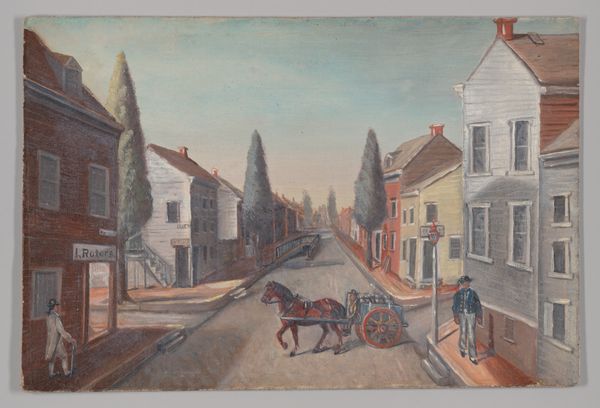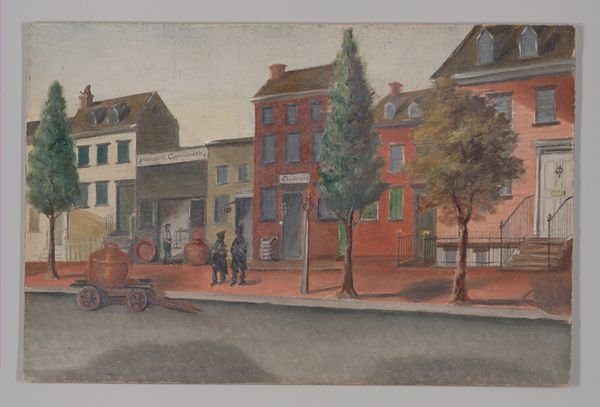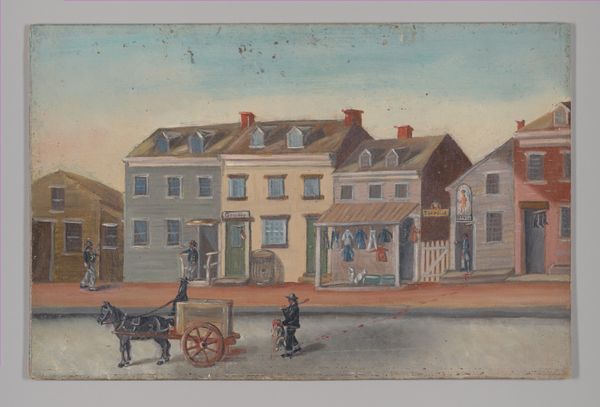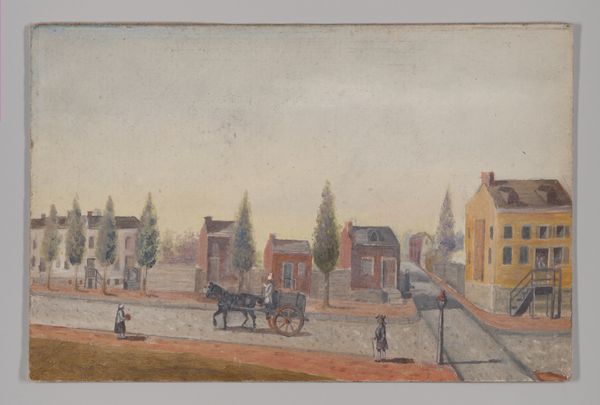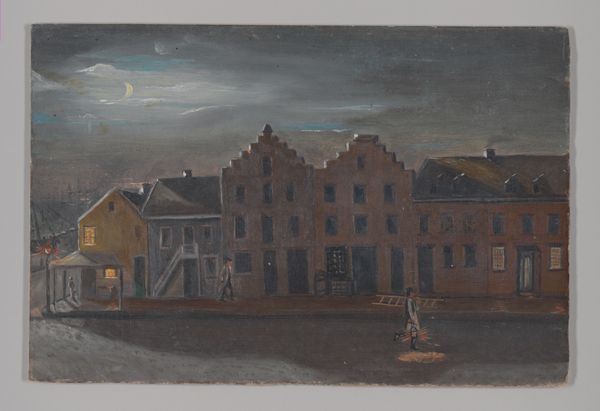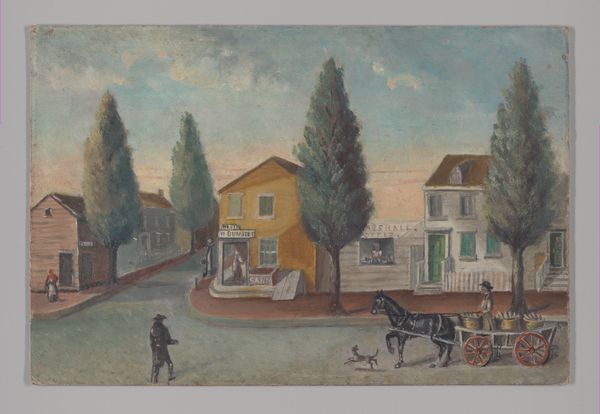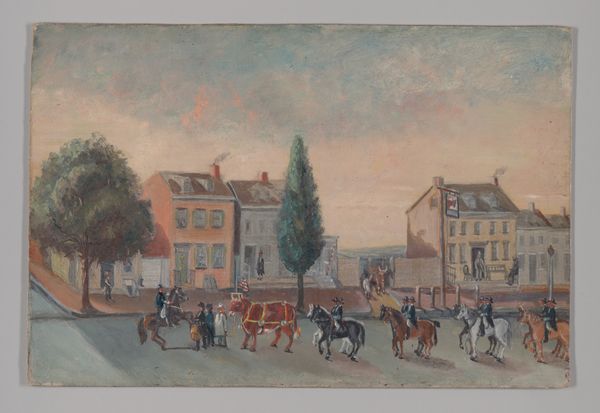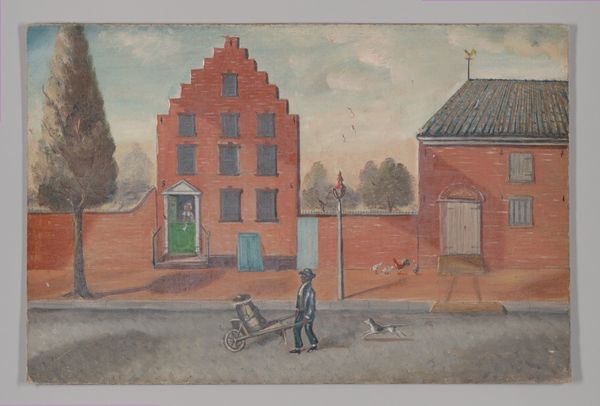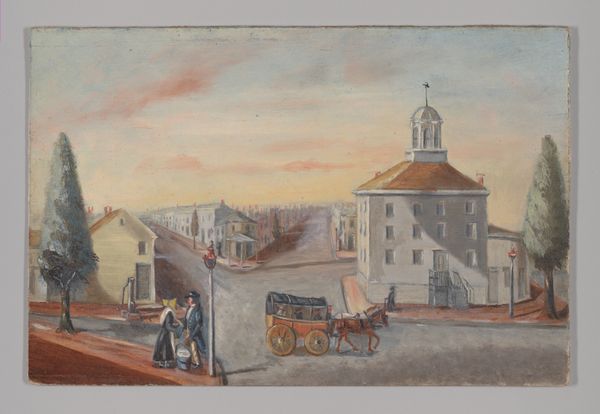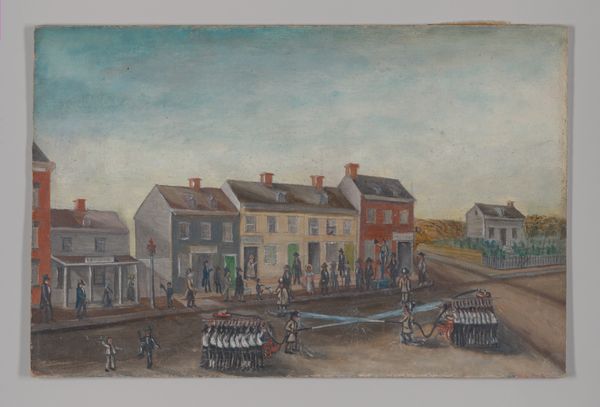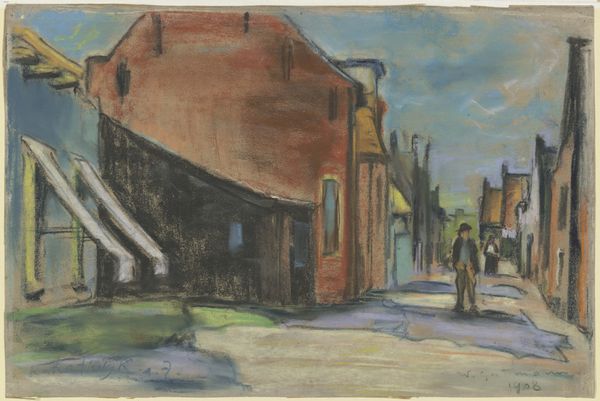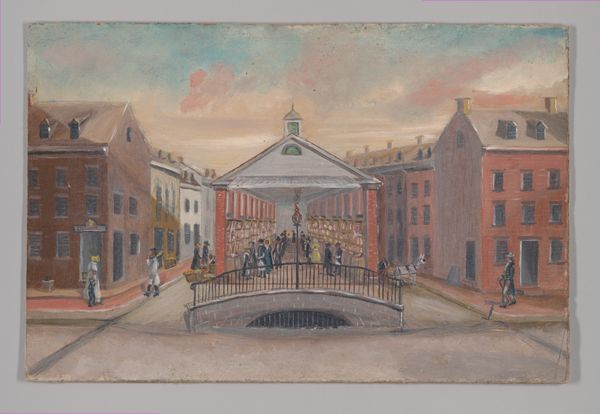
painting, watercolor
#
16_19th-century
#
water colours
#
painting
#
landscape
#
house
#
watercolor
#
coloured pencil
#
horse
#
men
#
painting painterly
#
cityscape
#
genre-painting
#
academic-art
#
realism
Dimensions: 6 1/16 x 9 5/16 in. (15.4 x 23.7 cm)
Copyright: Public Domain
Curator: Here we have "Tea water pump," a watercolor completed around 1870 by William P. Chappel. Editor: It feels rather... melancholic. The colors are muted, the brushstrokes loose. You can almost smell the dampness in the air, see the hard work etched on that figure near the horse-drawn cart. Curator: Yes, a deliberate tonal quality permeates Chappel's approach. The city, almost a village here, becomes a symbol of everyday life. The pump, the water seller, all play into our visual history, evoking ideas of civic life from past times. Editor: I'm particularly drawn to the man himself. The detail, compared to the haziness of the buildings, focuses our attention on labor, and its relationship to this rudimentary system of resource distribution. What did it mean to manually move water through these streets in 1870? The texture of labor seems significant here. Curator: Precisely! He’s the linchpin to how we would understand this particular narrative. His existence provides this tableau with profound depth, as this imagery provides glimpses of how such commonplace encounters built a city's story, brick by brick, or bucket by bucket, connecting us back to his reality. Editor: It is quite grounding. It brings into stark relief the manual effort that once underpinned urban living. Before complex infrastructure, simple tools were used. This material dependence shapes both community and class consciousness. The water-pump itself could be said to be at the forefront of waterworks innovation as its functionality helped pave the way for more automated practices in public utilities later down the line. Curator: His depiction reminds us that water as symbol signifies cleansing, rebirth. It connects directly with fundamental experiences but filtered, shaped through social reality that is part and parcel of his individual presence as well. Editor: And it all rests on the application of watercolor and coloured pencil. This immediate, hands-on approach—mixing, layering—emphasizes a human relationship to the subject in every step of creation and allows Chappel's audience to view art for its craft, rather than just its inherent beauty. Curator: A vital observation—Thank you. Editor: It was fascinating to delve into what we see and what is behind that.
Comments
No comments
Be the first to comment and join the conversation on the ultimate creative platform.
